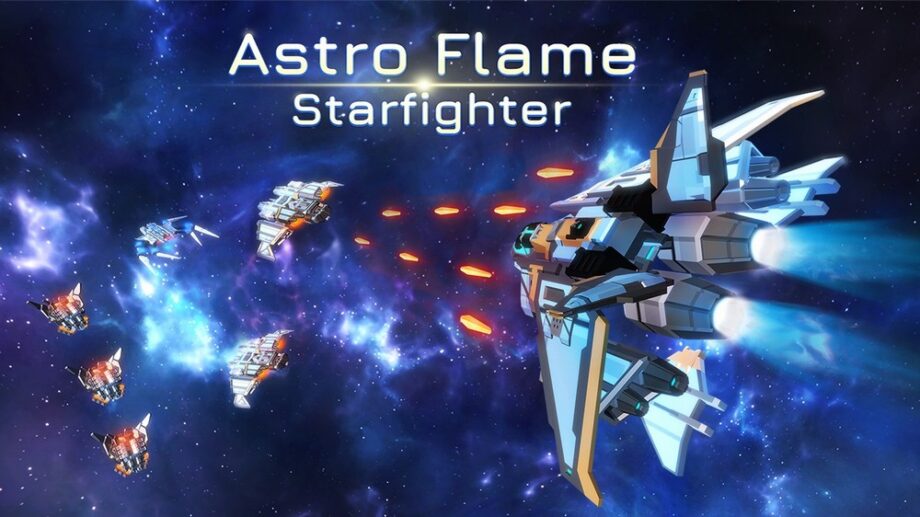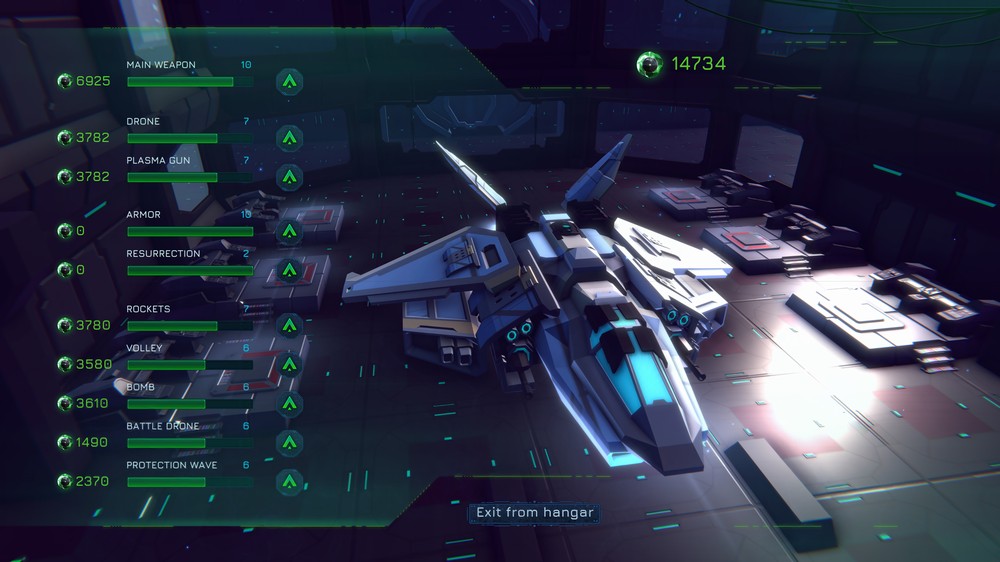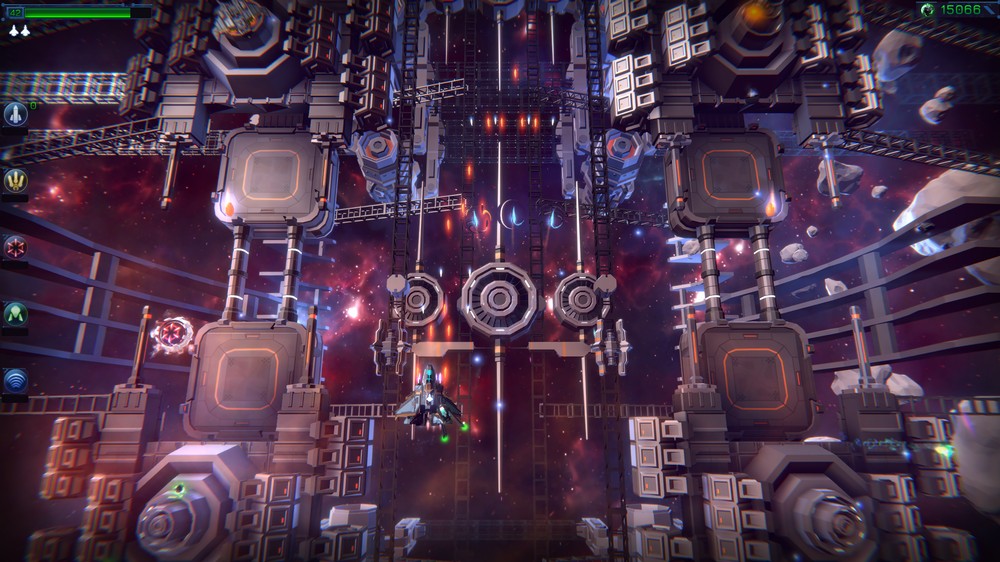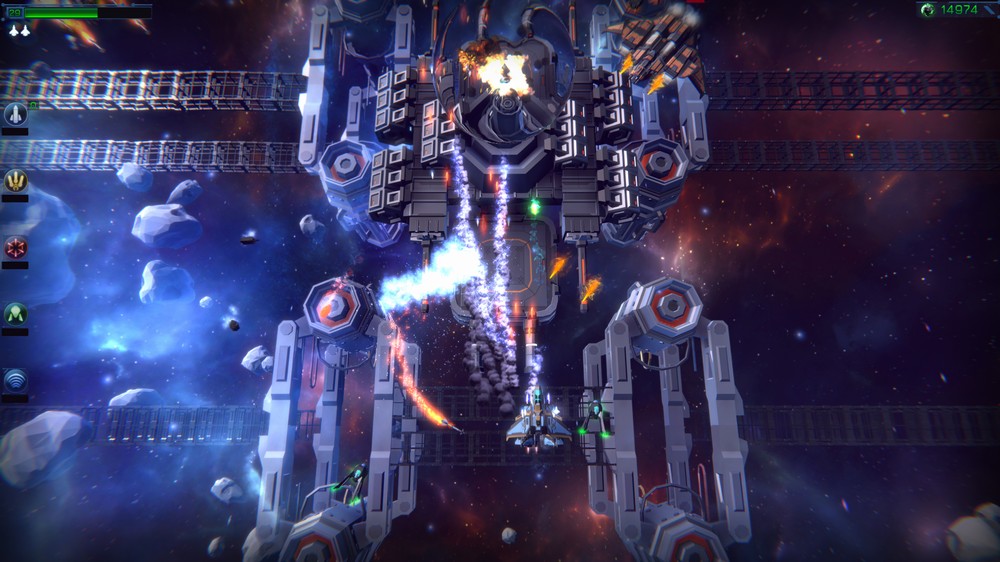Last September, a fun bullet-hell space shooter called A, AI released on the PlayStation. It was a simple and elegant design with an appropriate level of grinding for upgrades to stay competitive in the later stages. I only bring this up because at its core, A, AI is 99.9% identical to Astro Flame: Starfighter, which also released to the PlayStation just eleven months later. The good news is that both games come from the same developer and publisher, so we can call off the copyright police, but just know going in that if you have already played A, AI then you have already played this.
Priced at only $10, you literally get what you pay for and nothing else. A barebones menu gets you into the game where you can pick your stage (from any previously completed) or visit the hanger to spend your winnings on essential ship parts to make you more powerful. You’ll need plenty of upgrades to progress through all 15 levels as well as earning three stars for each completed level. Per the formula, if you win the level, you keep your earnings and maybe a bonus, but if you lose all your lives, you can only bank half your winnings.
The one thing that really grinds my gears is that Astro Flame: Starfighter is not a cross-buy purchase, so owners of both PS4 and PS5 can’t buy once. I’m not sure what the PS4 graphics actually look like; I did play the PS4 version of A, AI when I reviewed it, and things don’t look much better on the PS5 version of this game. Given the source material it can’t be that different, so maybe playing the PS4 version on the PS5 won’t even be “that” noticeable. There’s not a lot happening under the hood of this game as far as raytracing or even special features like fast loading.
Much like A, AI the game is fire and forget; you can even setup the game to auto-fire, which does reduce stress on whatever button you have assigned to the main guns. This leaves you only to worry about nimble positioning and activating your secondary arsenal which include rockets, missiles, drones, sonic beams, and a smart bomb. All of these devices can be upgraded in the hangar between missions and are resupplied in-game by loot drops from defeated enemies.
Astro Flame: Starfighter is simple in design yet remains futuristically flashy with multiple levels of parallax scrolling. There are flying ships as well as laser turrets and rocket launchers that need to be avoided. I was surprised to see that while the enemy designs have changed, their attacks and Galaga-style flight patterns into the level were identical to A, AI. The levels are tightly scripted making it easy to learn the levels and plan the best use of your weapons. Upgrades make a very noticeable difference, and assigning those points can help tailor the game to your own playing style.
The music is on fire with some great ambient music to keep the adrenaline flowing, and thankfully it doesn’t get repetitive because you will be replaying levels a lot. The soundtrack just blends into the cacophony of laser fire and explosions. There is minimal voice content, but what there is works for the game. One thing I enjoyed is that the haptics are very aggressive with enhanced sound effects that turn the staccato of the weapons into the beat track of your score.
Astro Flame: Starfighter is just another arcade shooter, not all that different from the ones found in arcades 40 years ago. Thankfully, this one doesn’t take quarters or I’d be broke because I am a sucker for these kind of “just one more try” shooters, especially in a game designed around failure where you are still compensated just enough for one more upgrade and one more attempt to see if that upgrade even mattered. If you love arcade space shooters then there is plenty to like about Astro Flame: Starfighter, even if it is a carbon copy of past shooters.














